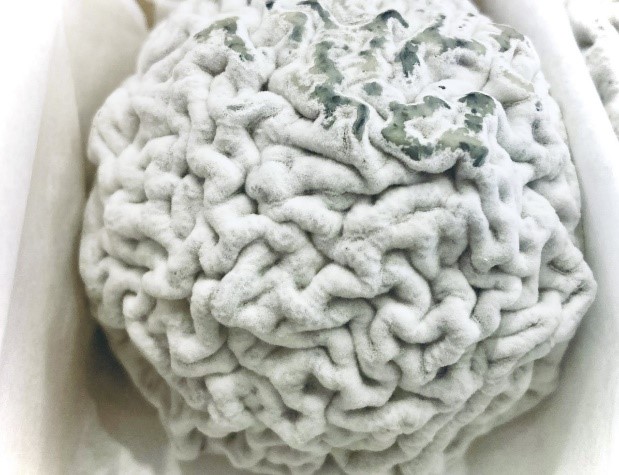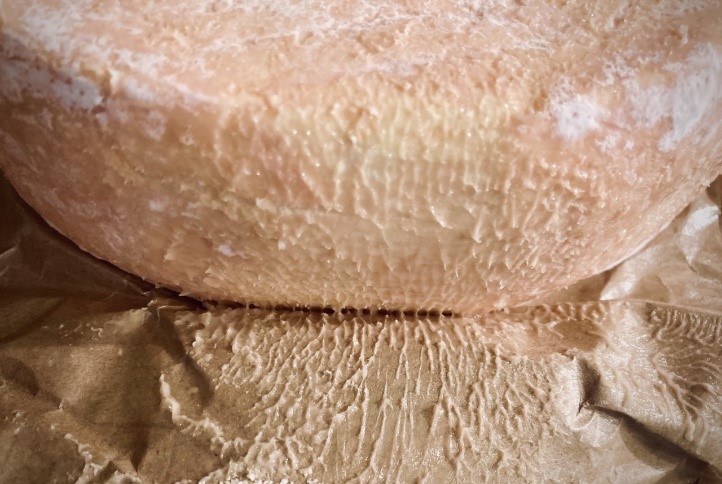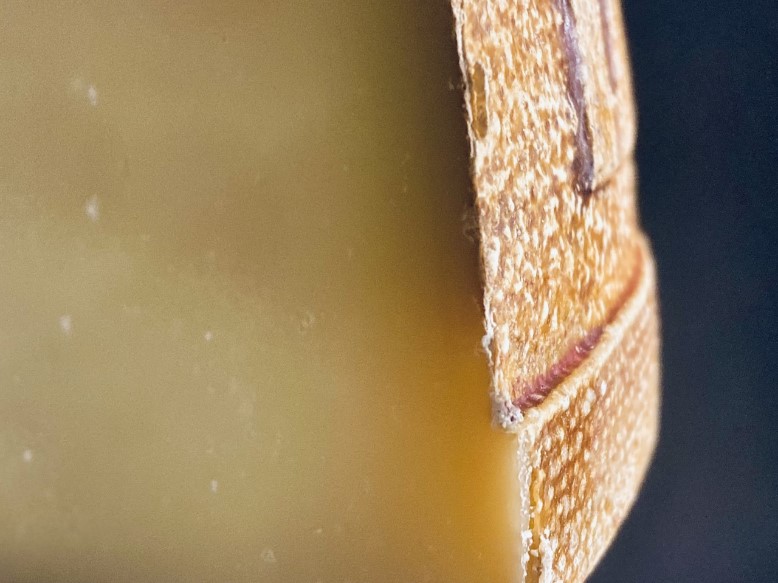Marché’s Own Molly Hess Heads to the Cheesemonger Invitational in New York City!
September 19, 2021Rockstar Women Cheesemakers by Molly Hess
March 6, 2022
The cheese counter question as old as time itself: Do I eat the rind?
You’ve got a wedge in your hot little hands but need to figure out your attack plan. Sometimes, with waxed-coated wedges of Gouda or Manchego, the answer is pretty clear. The wilder, natural formations though, can sometimes throw you for a loop. That toothy bite of brie? The gentle wrinkles on La Tur? The barky edges of Gruyere? The orange funk on a Taleggio hunk? All edible and enriching explorations on their own!
These different styles of rinds, at their base, serve to help ripen the final cheeses and offer them a protective barrier while they do so. What you’re witnessing are the designed choices of a cheesemaker or affineur (ager) to yield something delicious!
With softies like Camembert or Robiola, you’re seeing a castle built by microflora like P. Candidum/Camemberti (The white, toothy fluff on your bries and camemberts), or Geotrichum (a stunning robe of wrinkly brain coral). These are all tiny blooms of mold that eat up milk’s fat and protein to make an oozing savory custard. Seamless velvety textures when young, with age they imbibe a pleasant mushroom-y feel and flavor!


What about that beefy “washed-rind?” These stinkers get their name from a saltwater or alcohol bath to these soft cheeses’ outer layers; also referred to as “smear-ripened.” A bacteria called B. linens and pigment producing fungi set up shop, giving it that trademark melted dreamsicle hue and full-bodied “aroma.” Though the fresher rinds can be tacky with a gritty mouthfeel, you get an astonishing spectrum of flavors, from fresh slate (think lovely dry French white wine) to roasted peanut! More robust and mottled with age, you can trim away if tastes get too bitter for your preference.
Natural rinds, be they alpine/mountain styles, rustic blues or “tommes”, make for the most visually intimidating exteriors. Thick and earthy, from either repeated cultured brine washing and flipping, or carefully stewarded cave aging. But be prepared to be amazed with a nibble! These rinds eat like a dense mouthful of root vegetables; running the gamut from fresh potatoes and ripe beet to invigorating little bites of horseradish.
If you’re looking for the full adventure of a brand-new cheese, don’t be afraid of trying the whole hog! Fortune favors the bold, after all! Eat the rind and get the full story of that miraculous miracle of milk. And as always: if you’re not sure, ask your monger!
